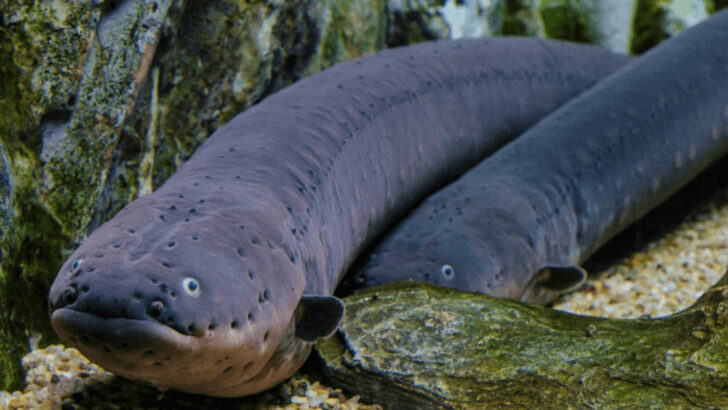The animal kingdom is full of jaw-dropping oddities that will make your jaw hit the floor. From the bizarre to the utterly mind-blowing, creatures across the globe have mastered some seriously strange tricks.
Get ready to have your mind blown by some of the most unusual animal quirks—these behaviors are nothing short of astonishing. Who knew animals could be so wild?
These fascinating creatures have evolved in ways that will make you rethink everything you thought you knew about the natural world. Grab your curiosity, because we’re diving into the quirkiest, most captivating behaviors out there. You won’t believe your eyes!
Axolotl’s Regeneration
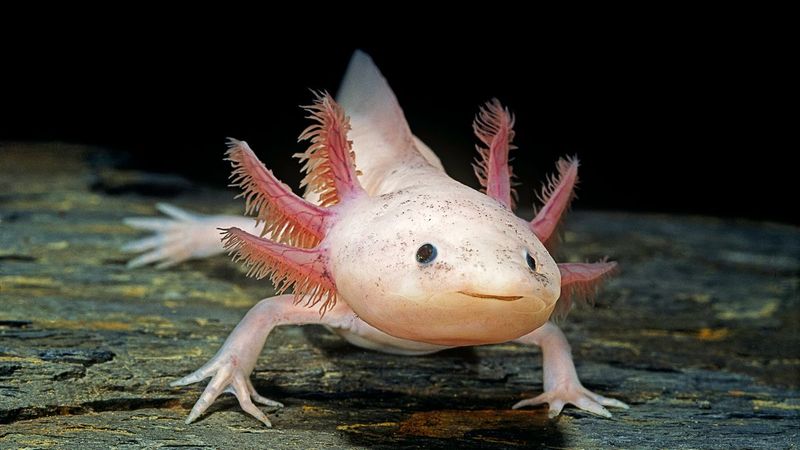
Axolotls are unique creatures with the incredible ability to regenerate lost body parts. They can regrow limbs, spinal cords, and even parts of their hearts without forming scar tissue. This remarkable trait makes them a subject of scientific interest.
Their habitat in the lakes of Mexico City provides a vital environment for their survival. The axolotl’s regenerative powers are not only fascinating but also hold potential insights for human medicine.
As you explore their quirks, consider how these abilities could influence medical advancements in regenerative therapies. Their quirky appearance adds to their charm.
Mimic Octopus Master of Disguise
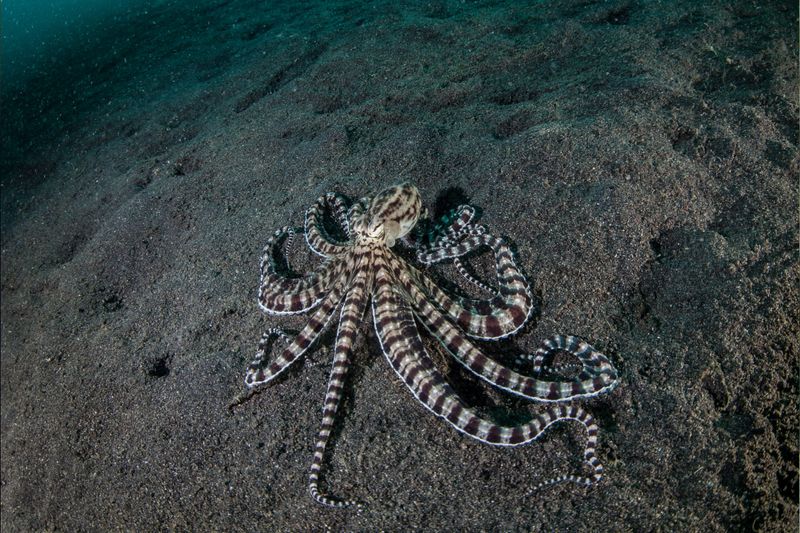
The mimic octopus has the astounding ability to imitate other marine animals, like lionfish and flatfish, to evade predators. This intelligent mollusk uses its body and color-changing skills to fool both prey and threats.
Its habitat in the Indo-Pacific region offers a diverse setting for its remarkable mimicry. By altering its appearance and movements, it can seamlessly integrate into its environment.
This chameleon-like behavior is not just a survival tactic but a testament to the intelligence and adaptability of cephalopods.
Tardigrade’s Resilience
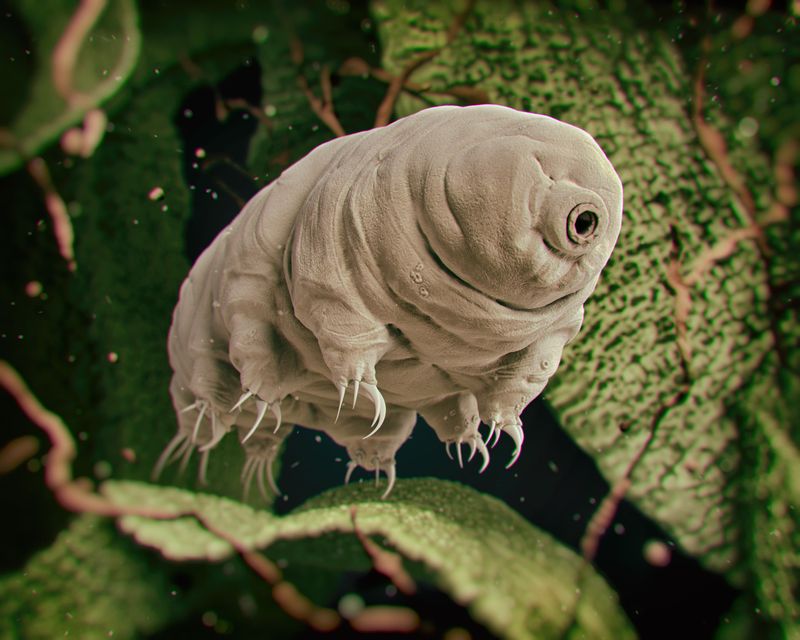
Tardigrades, often called water bears, are microscopic marvels known for their incredible resilience. They can survive extreme conditions, such as radiation, high pressure, and even the vacuum of space.
These tiny creatures are found worldwide, thriving in various environments from deep oceans to mountain tops. They enter a cryptobiotic state, allowing them to withstand harsh conditions.
Their survival abilities captivate scientists and curious minds alike, offering a glimpse into the potential for life beyond Earth. Tardigrades truly embody the idea of endurance in the most extreme environments.
Pistol Shrimp’s Sonic Snap
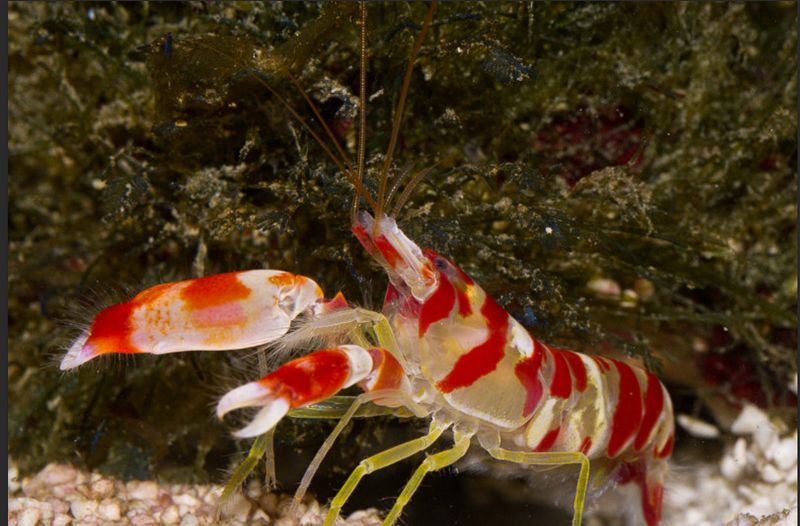
The pistol shrimp is a small marine creature with an explosive skill. By snapping its claw, it creates a powerful wave of bubbles that stuns prey.
This sonic snap can reach temperatures as hot as the sun’s surface, demonstrating the shrimp’s incredible hunting prowess. Living in coral reefs, it plays a vital role in the ecosystem, maintaining balance by controlling prey populations.
The pistol shrimp’s unique abilities make it a fascinating subject of study, showcasing nature’s ingenuity in the animal kingdom.
Naked Mole Rat’s Pain Insensitivity
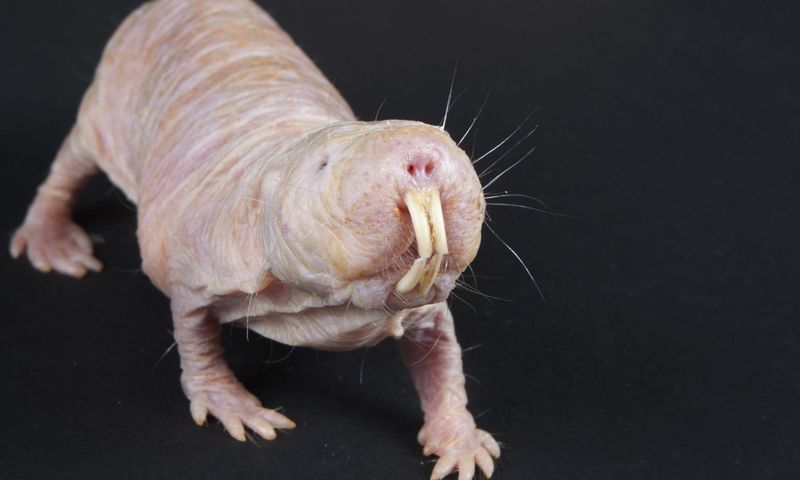
Naked mole rats are peculiar rodents known for their lack of pain sensitivity to acid and capsaicin. This unusual trait is part of their survival strategy in subterranean environments.
Living in East African underground burrows, they exhibit a eusocial structure similar to ants and bees. Their skin, resistant to tumors, adds another layer to their extraordinary biology.
These rodents challenge our understanding of pain perception and offer insights into potential medical breakthroughs. Their quirks extend beyond biology, influencing research in cancer and pain management.
Treehopper’s Helmets
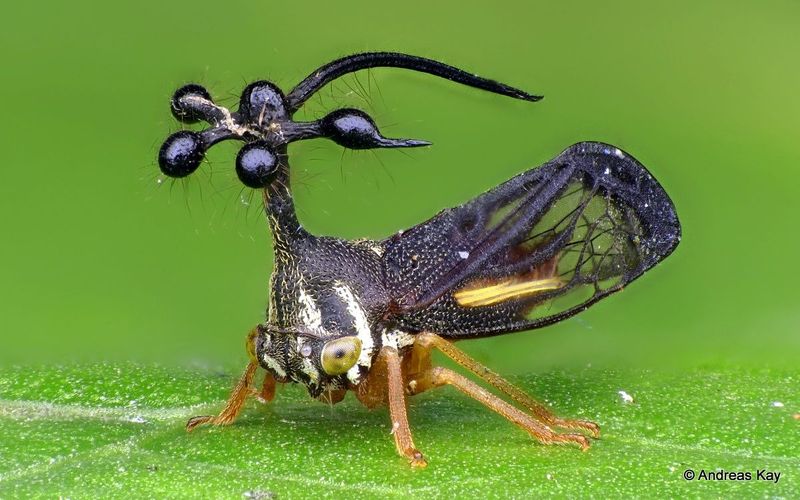
Treehoppers are insects with bizarre helmet-like structures on their backs. These curious extensions can mimic thorns, leaves, or even ants, providing camouflage from predators.
Found in tropical forests, they are a testament to nature’s creativity and the evolutionary arms race between predator and prey. Their helmets are a result of modified dorsal tissue, showcasing the versatility of insect anatomy.
These quirky adaptations not only serve as defense mechanisms but also highlight the intricate relationships within ecosystems.
Fainting Goats’ Myotonia

Fainting goats, known for their myotonic condition, experience temporary muscle stiffness when startled. This hereditary trait causes them to “faint,” although they remain conscious.
Originating in Tennessee, these goats have become popular for their unique reaction. Their condition is due to a genetic mutation affecting chloride channels in muscle cells.
Despite their quirkiness, fainting goats live normal, healthy lives, offering an amusing yet insightful look into genetic diversity and adaptation within species.
Platypus’s Electrolocation
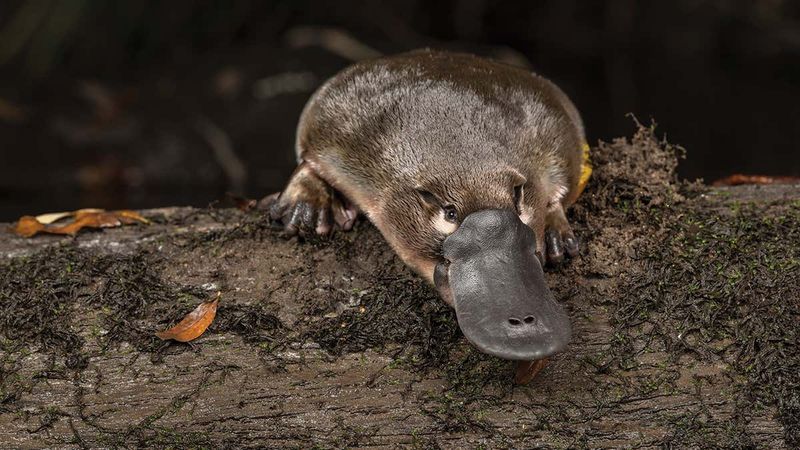
The platypus is a remarkable monotreme, using electrolocation through its bill to detect prey underwater. This ability allows it to hunt efficiently in murky streams.
Native to Australia, the platypus represents a unique blend of mammalian and reptilian traits. Its bill contains electroreceptors that pick up on electrical signals produced by other animals.
This sensory adaptation highlights the complexity of evolutionary processes, as the platypus thrives in its habitat, balancing ancient and modern traits.
Lyrebird’s Mimicry
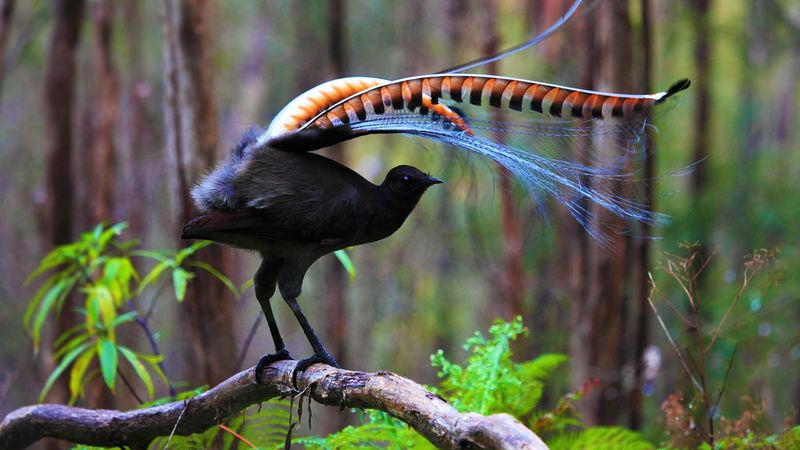
Lyrebirds are renowned for their exceptional vocal mimicry, able to replicate sounds from their environment, including chainsaws and camera shutters.
These Australian birds use their mimicry to attract mates and establish territory. Their ability to imitate both natural and artificial sounds is a testament to their intelligence and adaptability.
The lyrebird’s song is a complex blend of creativity and survival strategy, offering a mesmerizing auditory experience that showcases the wonders of avian communication.
Sea Cucumber’s Defense Mechanism
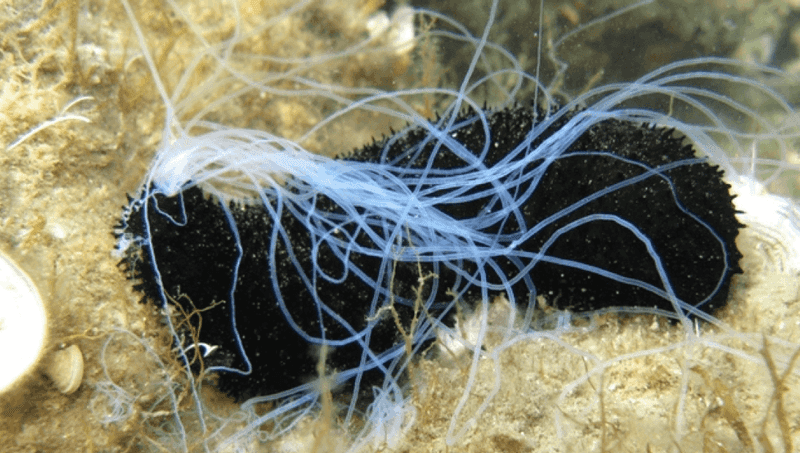
Sea cucumbers possess a unique defense mechanism, expelling their internal organs to deter predators. This process, known as evisceration, allows them to escape and regenerate lost organs.
Inhabiting ocean floors worldwide, they play a crucial role in marine ecosystems by recycling nutrients and maintaining sediment health.
Their regenerative abilities and odd defense tactics provide insight into the diversity of survival strategies in the ocean. Sea cucumbers remind us of the delicate balance in marine life.
Pangolin’s Armor
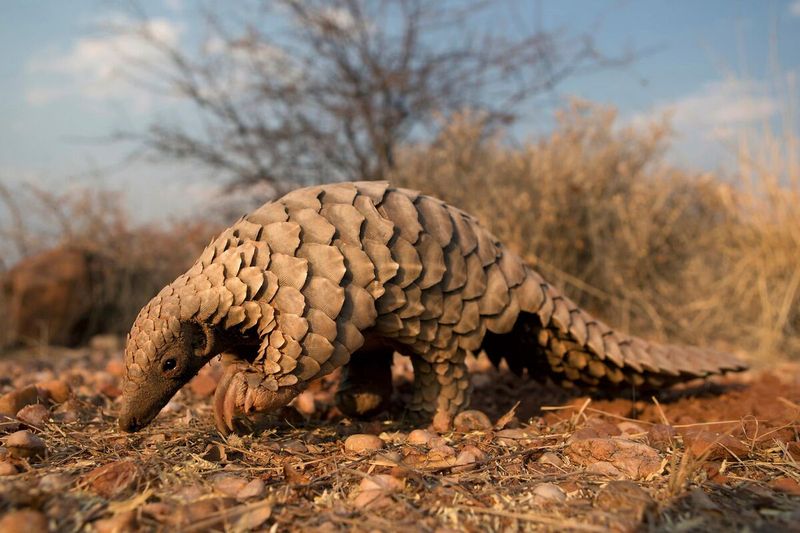
Pangolins are unique mammals covered in keratin scales, providing armor-like protection. When threatened, they curl into a ball, deterring predators.
Found in Africa and Asia, pangolins face threats from poaching and habitat loss, making conservation efforts critical. Their scales, made of the same material as human fingernails, are highly sought after.
Despite their vulnerability, pangolins’ defensive adaptations highlight the incredible evolution of protective traits in the animal kingdom.
Archerfish’s Shooting Precision
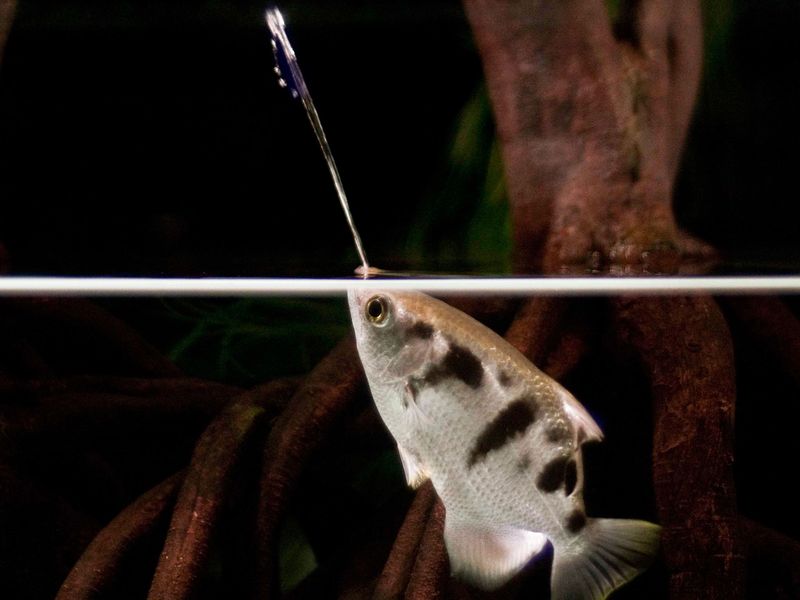
Archerfish are known for their remarkable ability to shoot jets of water to knock insects into the water. This precise hunting technique is a testament to their coordination and adaptation.
Inhabiting Southeast Asian waterways, archerfish use their mouth structure to aim and fire accurately, often compensating for light refraction.
Their unique hunting strategy offers insights into the evolution of feeding behaviors and the interplay between predator and prey. Archerfish exemplify the precision of nature’s designs.
Electric Eel’s Shock
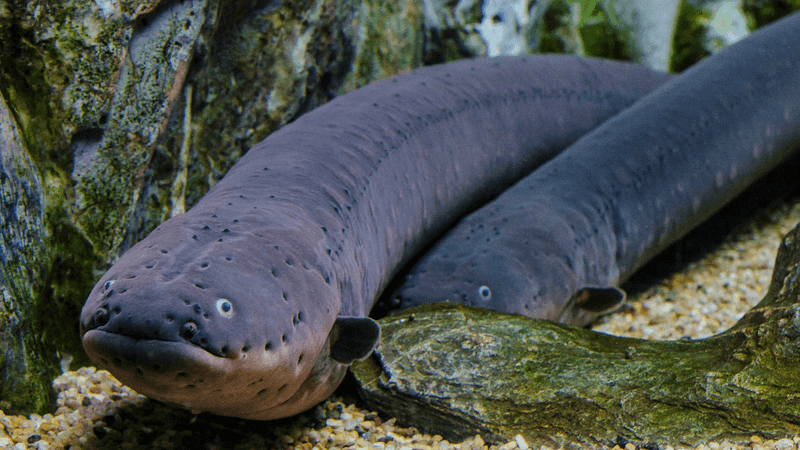
Electric eels can generate powerful electric shocks, using specialized cells called electrocytes. This ability helps them hunt and defend against predators.
Found in the Amazon and Orinoco basins, they use electricity for communication, navigation, and stunning prey. Their shocks can reach up to 600 volts, demonstrating nature’s ingenuity.
The electric eel’s abilities shed light on the complex adaptations of aquatic life, illustrating the blend of biology and physics in survival strategies.
Leafcutter Ant’s Farming Skills
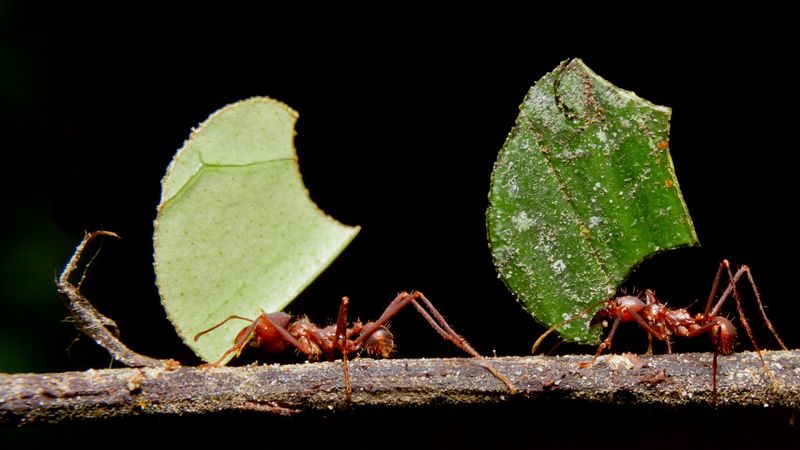
Leafcutter ants are remarkable for their agricultural skills, cultivating fungus on collected leaves. This symbiotic relationship showcases their complex social structure.
These ants, found in Central and South American rainforests, demonstrate advanced farming techniques, cutting and transporting leaves to grow their fungal food source.
Their farming prowess offers insights into collective behavior and the interplay between organisms, highlighting the evolutionary advantages of cooperation.
Bombardier Beetle’s Chemical Defense
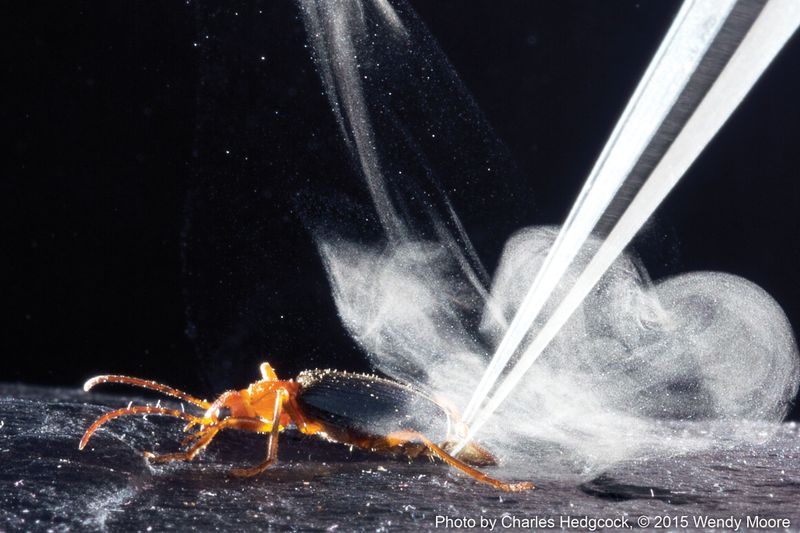
The bombardier beetle is equipped with a unique defense mechanism, releasing a hot, noxious chemical spray to deter threats.
Found in various habitats, this beetle mixes chemicals in its abdomen to produce an explosive reaction. The spray can reach temperatures near boiling, showcasing an evolved survival tactic.
Its chemical defense highlights the intricate adaptations of insects and the ongoing evolutionary arms race between predator and prey.
Narwhal’s Tusk

Narwhals, known as the unicorns of the sea, possess a long, spiraled tusk, which is actually an elongated tooth.
Inhabiting Arctic waters, narwhals use their tusk for sensing environmental changes and possibly in social interactions. The tusk’s sensory capabilities provide a unique adaptation to the icy habitat.
Their mysterious tusk continues to intrigue scientists, offering a glimpse into the evolution of specialized traits and the mysteries of marine life.
Immortal Jellyfish’s Rejuvenation
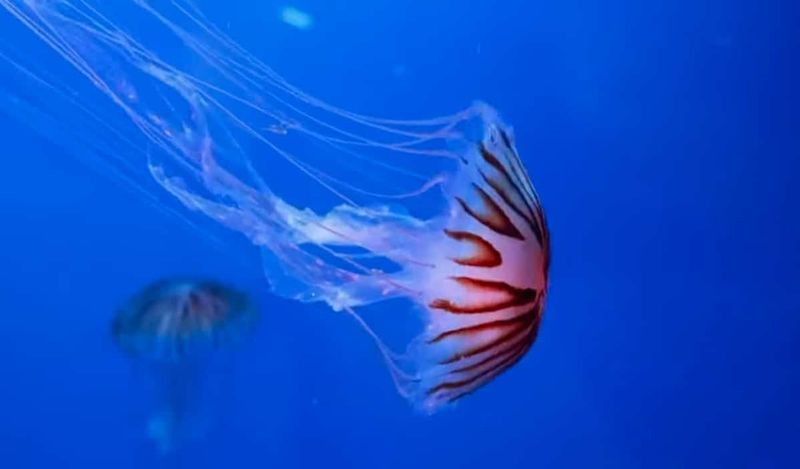
The immortal jellyfish has the astonishing ability to revert to its juvenile form, effectively bypassing death.
Found in oceans worldwide, this jellyfish uses transdifferentiation to transform its cells, offering potential insights into aging and longevity.
Its regenerative cycle fascinates researchers, highlighting the possibilities of biological immortality and the complex life cycles of marine organisms.
Opossum’s Playing Dead

Opossums have a well-known strategy of playing dead when threatened. This act, known as thanatosis, is an involuntary response to stress.
Common in North America, opossums use this tactic to deter predators by appearing unappetizing. Their ability to mimic the appearance and smell of a sick or dead animal is a powerful survival strategy.
This behavior reveals the diverse tactics animals employ to evade danger, emphasizing the intricate balance of predator-prey interactions.
Cuttlefish’s Dynamic Camouflage
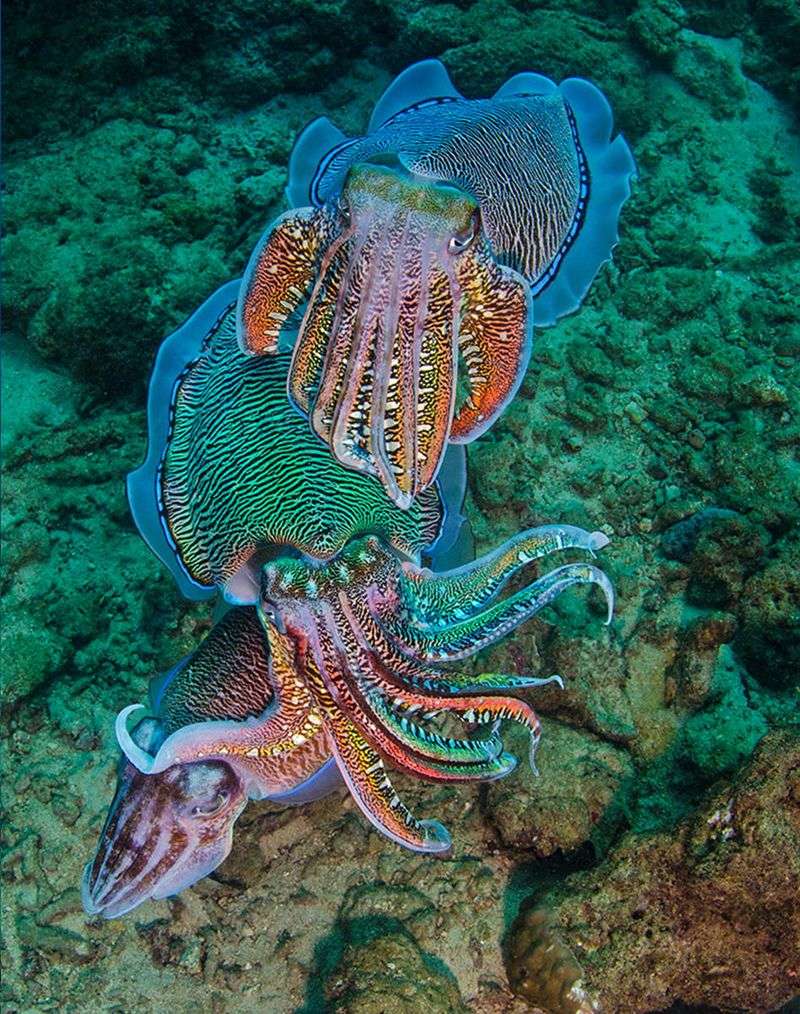
Cuttlefish are masters of dynamic camouflage, able to change color and texture to blend into their surroundings.
These cephalopods, thriving in oceans globally, use specialized skin cells called chromatophores to adjust their appearance in milliseconds. This ability aids in hunting and avoiding predators.
Their remarkable camouflage offers insights into the evolution of visual perception and communication in the aquatic environment.
Mantis Shrimp’s Punch
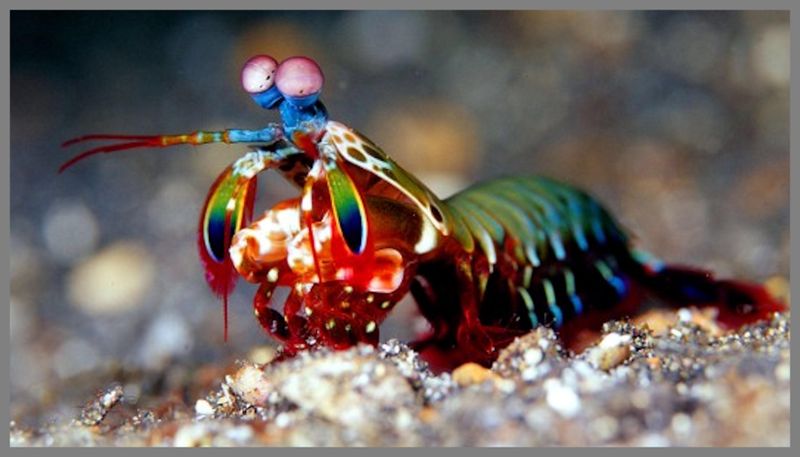
Mantis shrimp possess one of the most powerful punches in the animal kingdom, capable of breaking shells with incredible speed.
Living in tropical and subtropical waters, they use their club-like appendages to hunt and defend their territory. The speed of their punch generates cavitation bubbles, adding to their destructive force.
Their striking abilities highlight the physical adaptations in marine predators and the evolutionary pressures shaping them.
Superb Bird-of-Paradise’s Dance
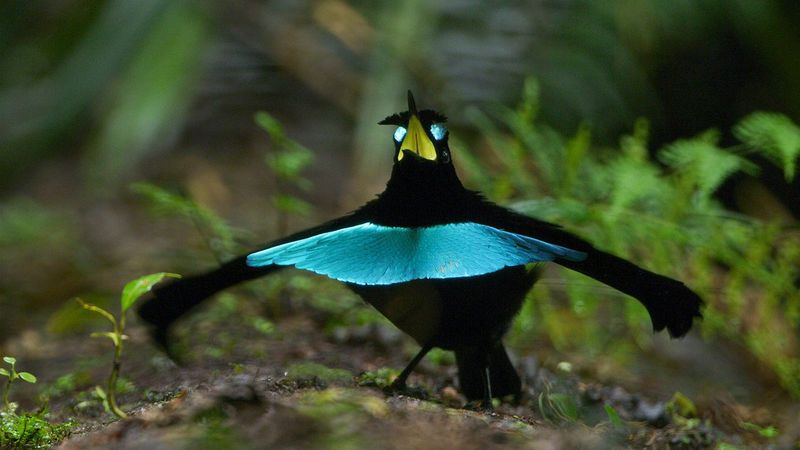
The superb bird-of-paradise is famed for its elaborate courtship dance, where males display vibrant feathers and perform choreographed moves to attract females.
Native to New Guinea’s rainforests, these birds use their striking appearance and dance routines to compete for mates. Their performances are a blend of visual and behavioral adaptation.
Their courtship rituals illustrate the role of sexual selection in evolution, showcasing the creativity and complexity of avian mating strategies.
Giraffe’s Neck Fighting
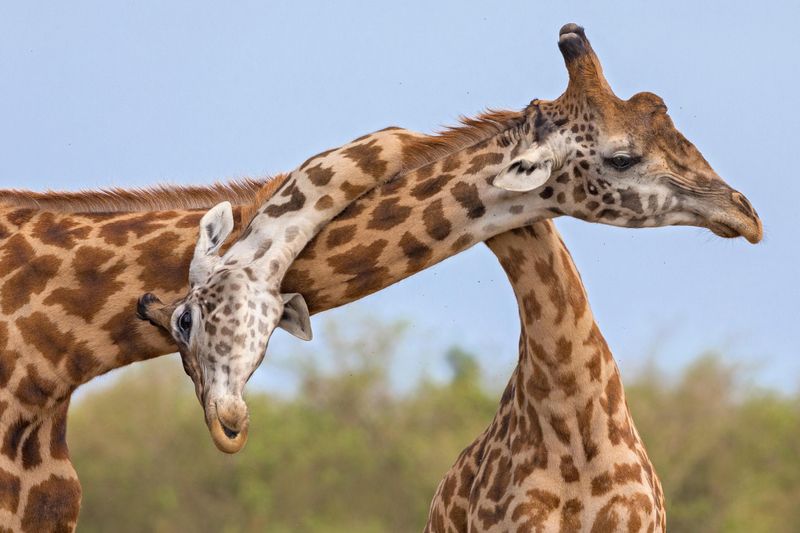
Giraffes are known for their necking behavior, where males swing their necks to strike opponents in competition for mates.
This behavior, observed on the African savannah, is both a display of strength and a method of establishing dominance. The impact of necks clashing is a spectacle of evolutionary adaptation.
Their unique fighting style demonstrates the role of physical traits in animal behavior and competition.
Alpine Ibex’s Cliff Climbing

The Alpine Ibex is renowned for its incredible ability to climb steep, rocky cliffs with ease. Inhabiting the European Alps, these goats navigate nearly vertical terrain to access mineral-rich salt licks and avoid predators.
Their sure-footedness and agility are a testament to evolutionary adaptation. Their climbing prowess offers insights into the interplay between anatomy and survival in extreme environments.
Vampire Bat’s Blood Feeding
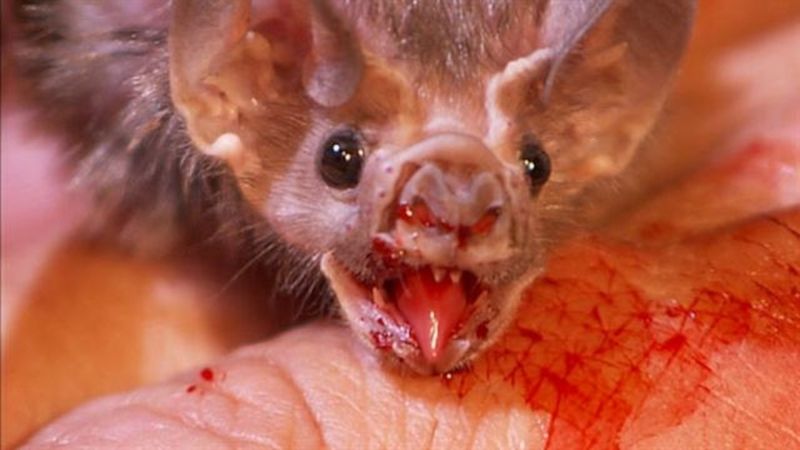
Vampire bats exhibit a unique feeding behavior, consuming blood from livestock and other animals. Found in Central and South America, these bats use heat sensors to locate blood vessels.
Their anticoagulant saliva ensures a steady flow of blood while feeding discreetly. This parasitic lifestyle highlights the diverse dietary strategies in the animal kingdom, emphasizing adaptation and survival.
Orangutan’s Tool Use
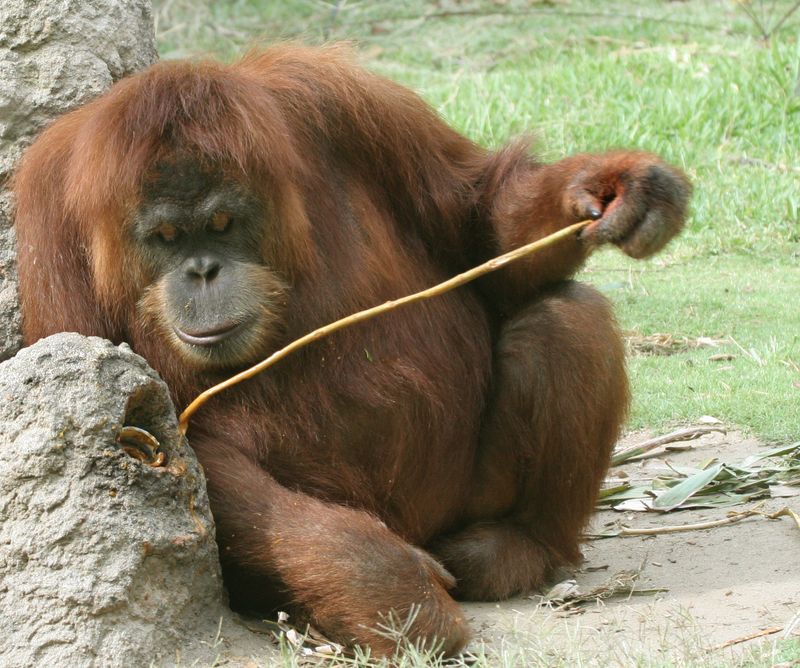
Orangutans are known for their intelligence and use of tools to solve problems in their environment. Inhabiting Bornean and Sumatran forests, they use sticks to extract insects and fruits from hard-to-reach places.
This behavior reflects their cognitive abilities and adaptability. Their tool use provides insights into primate cognition and the evolution of problem-solving skills, illustrating the complex relationship between environment and behavior.

